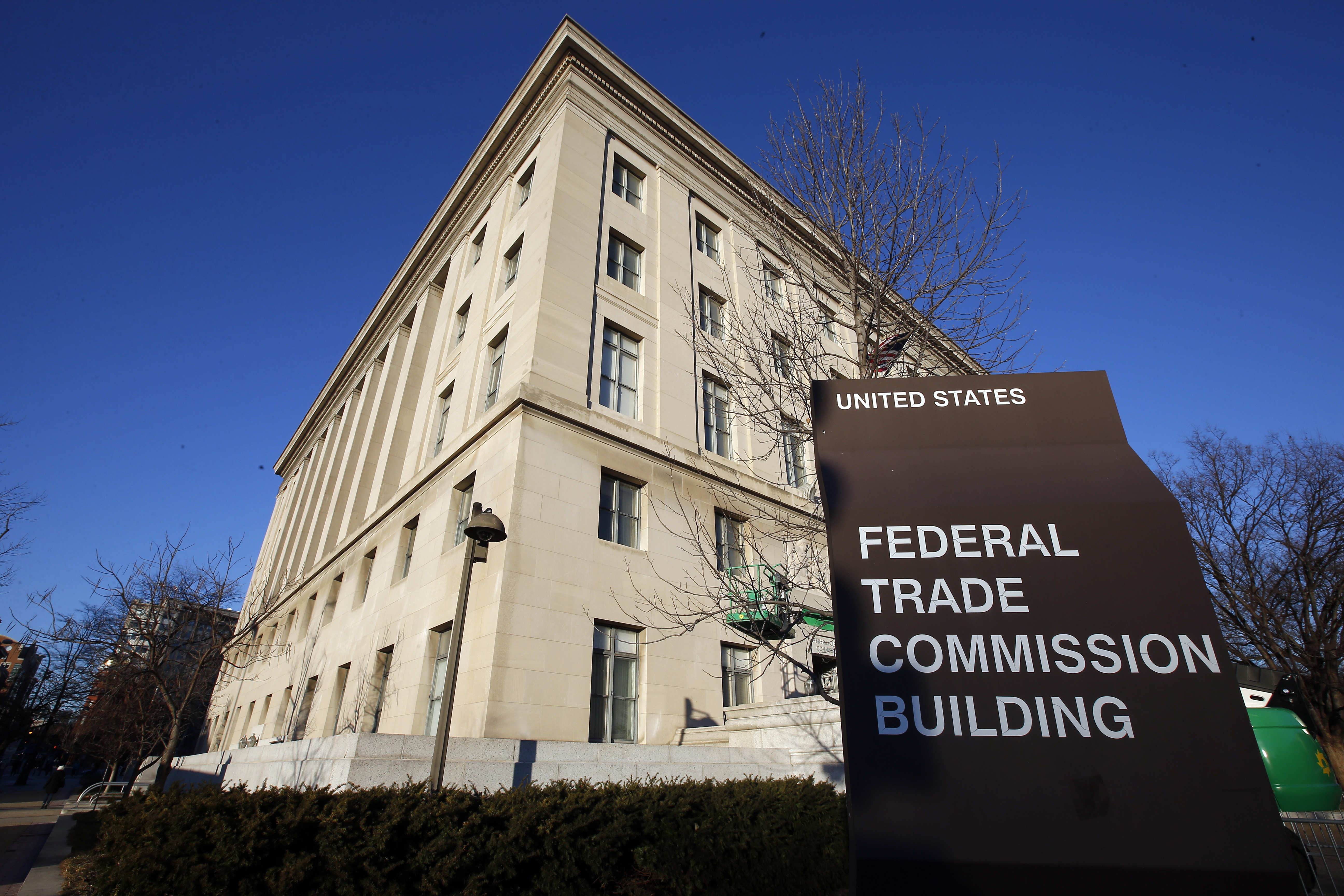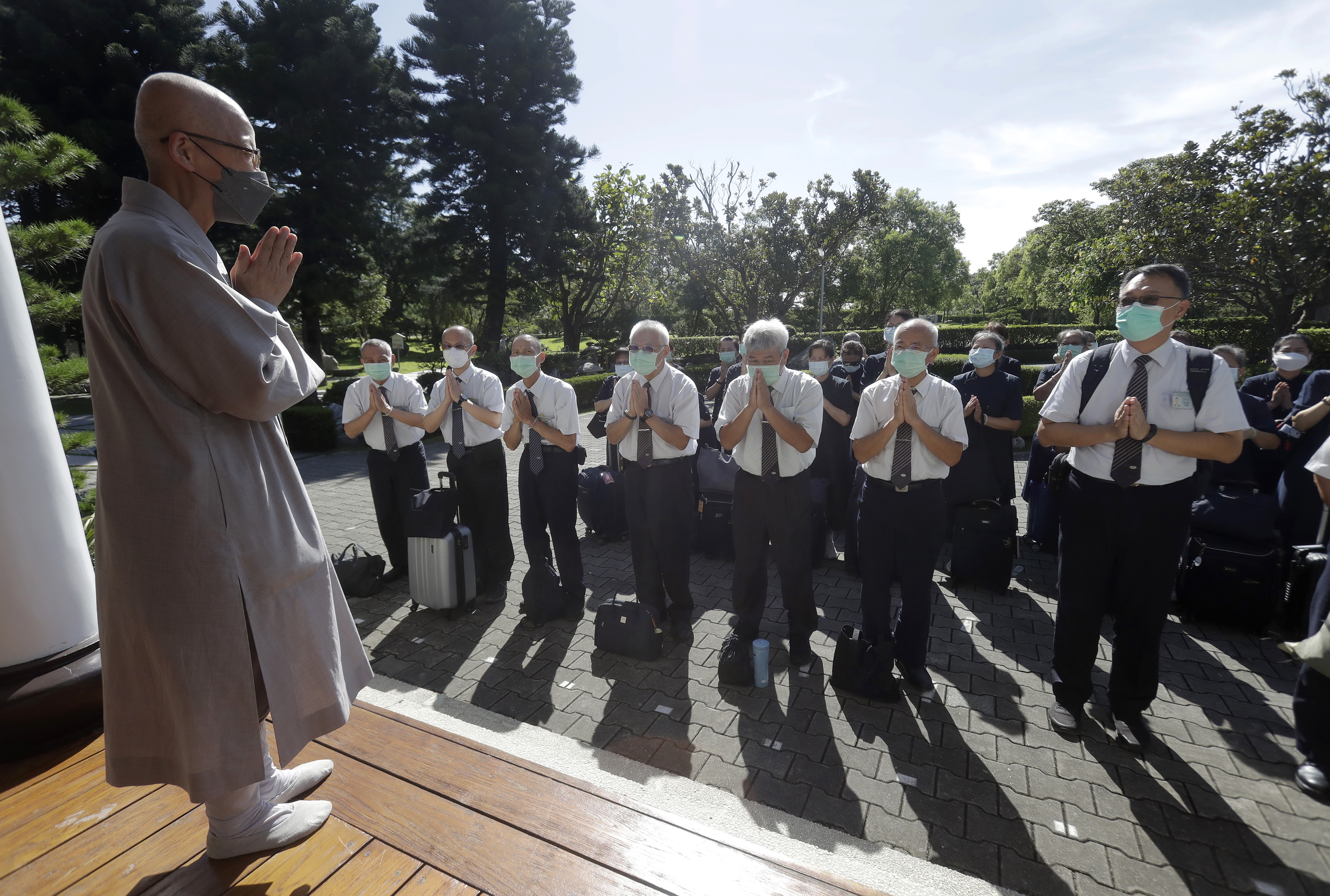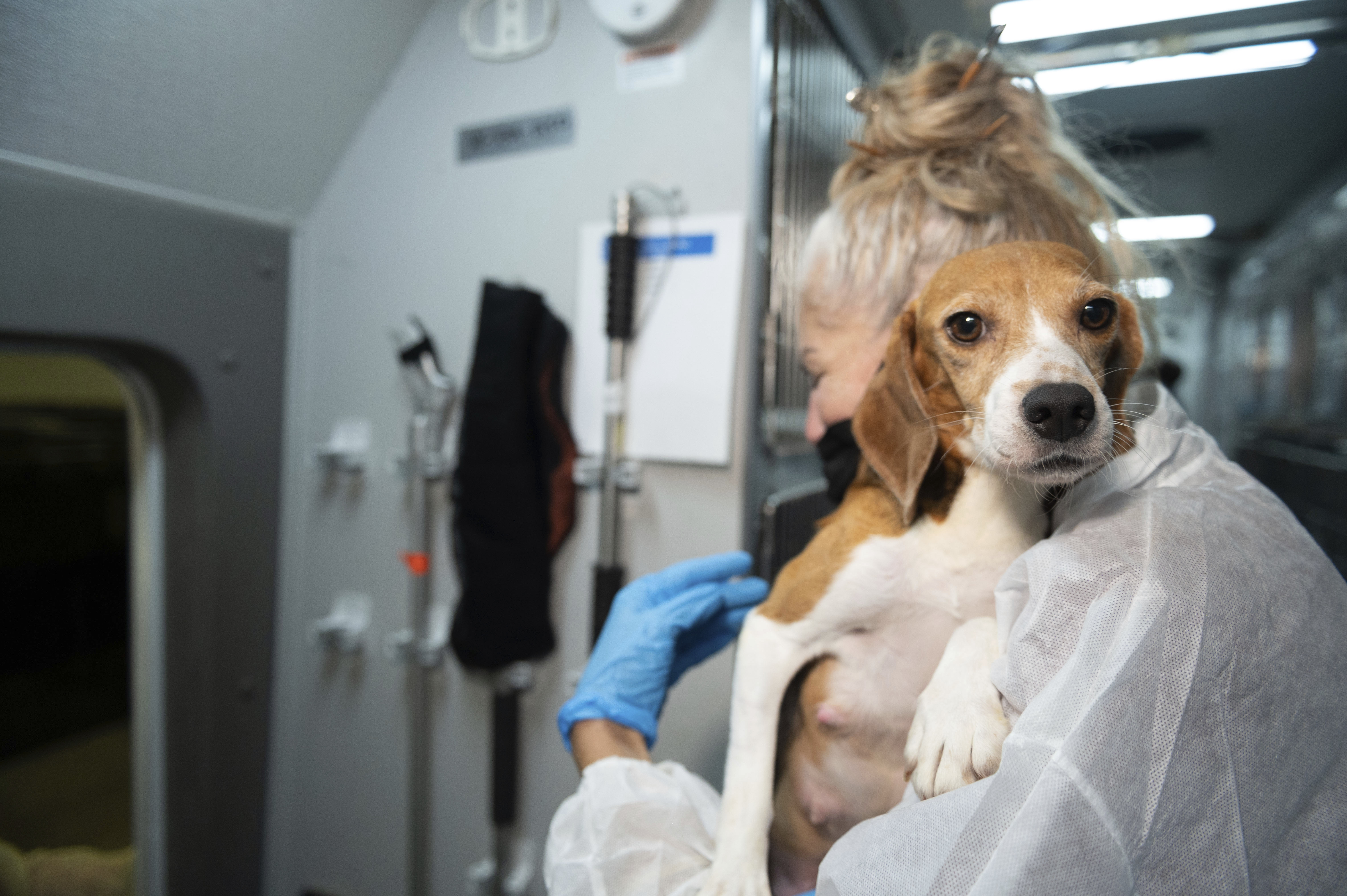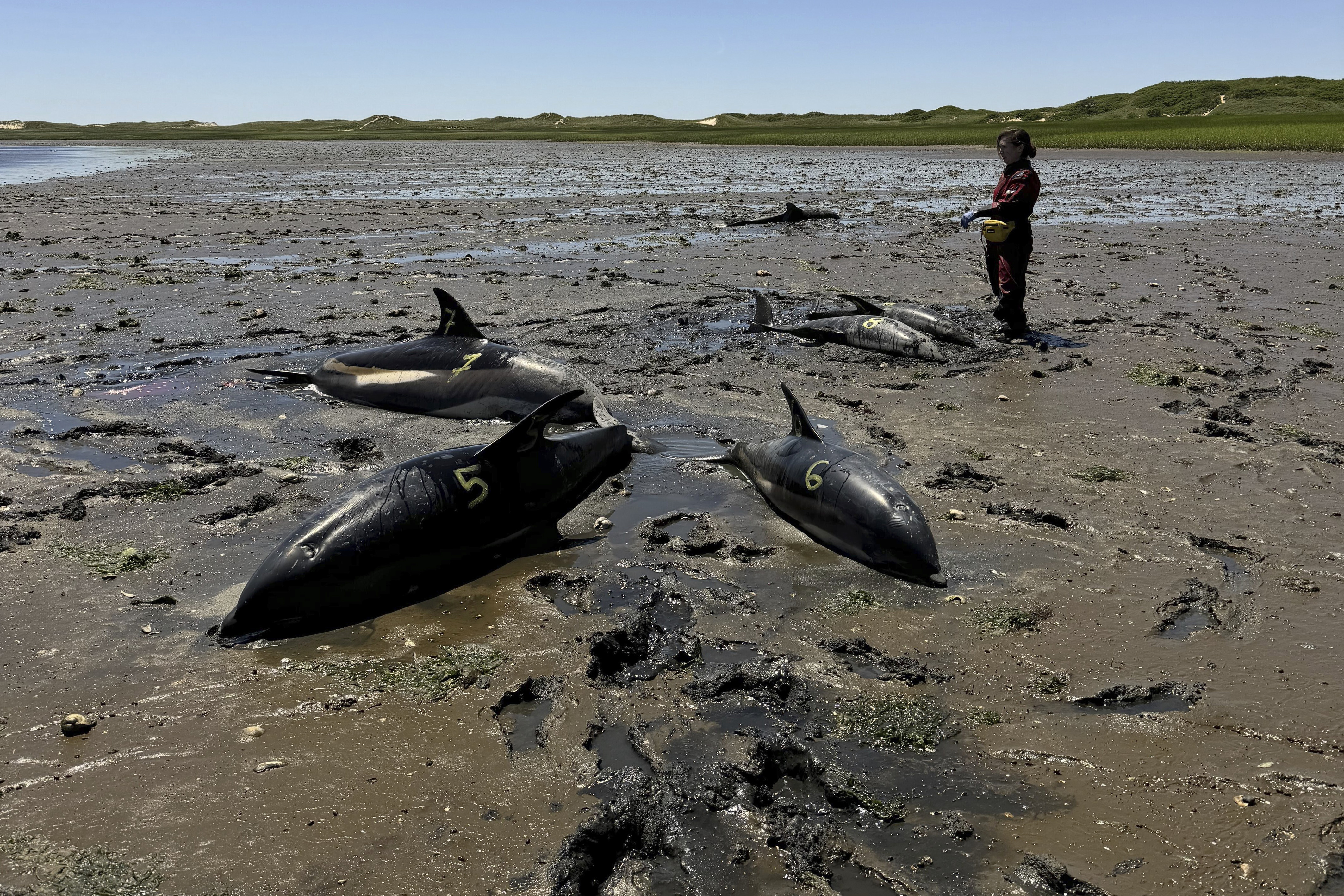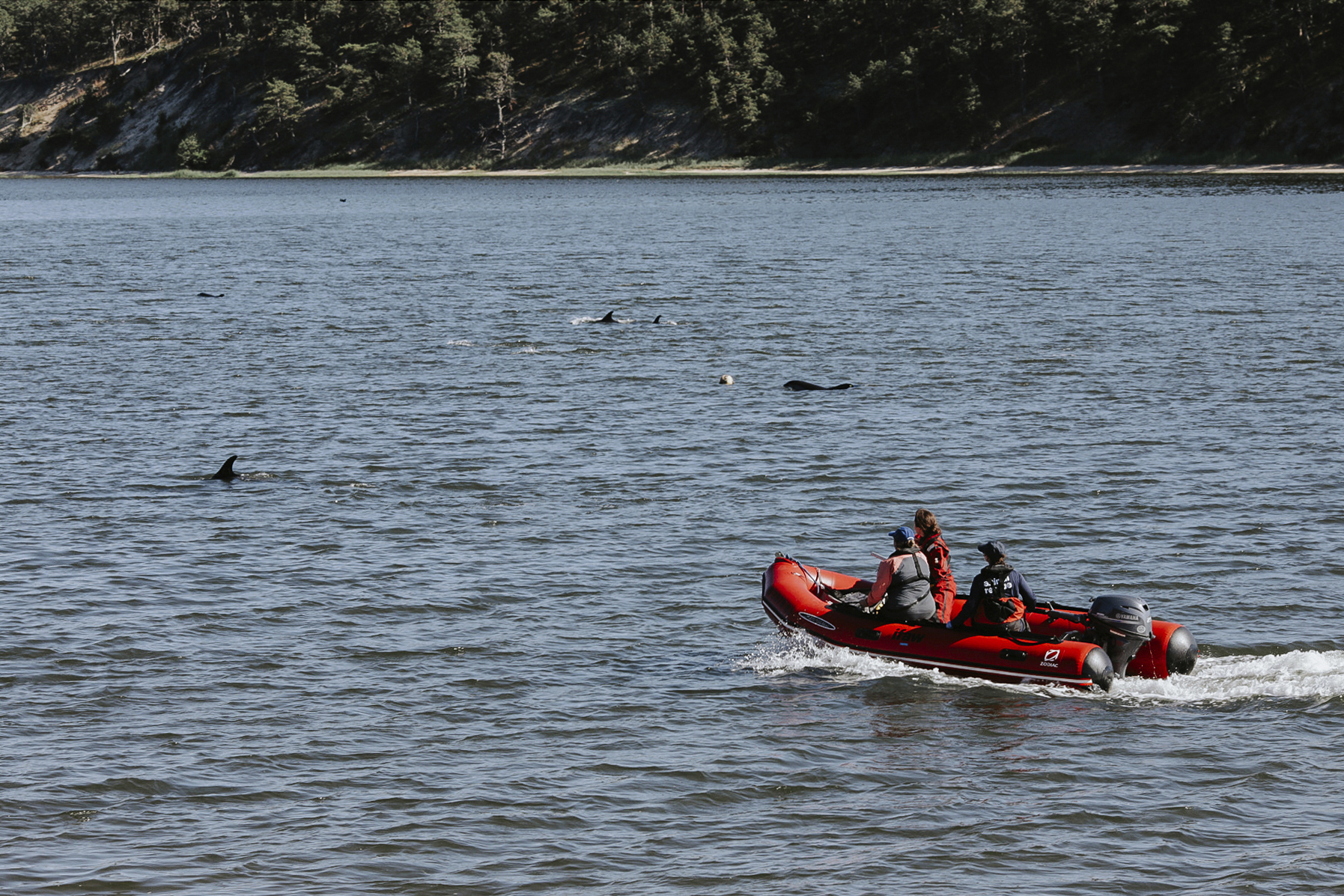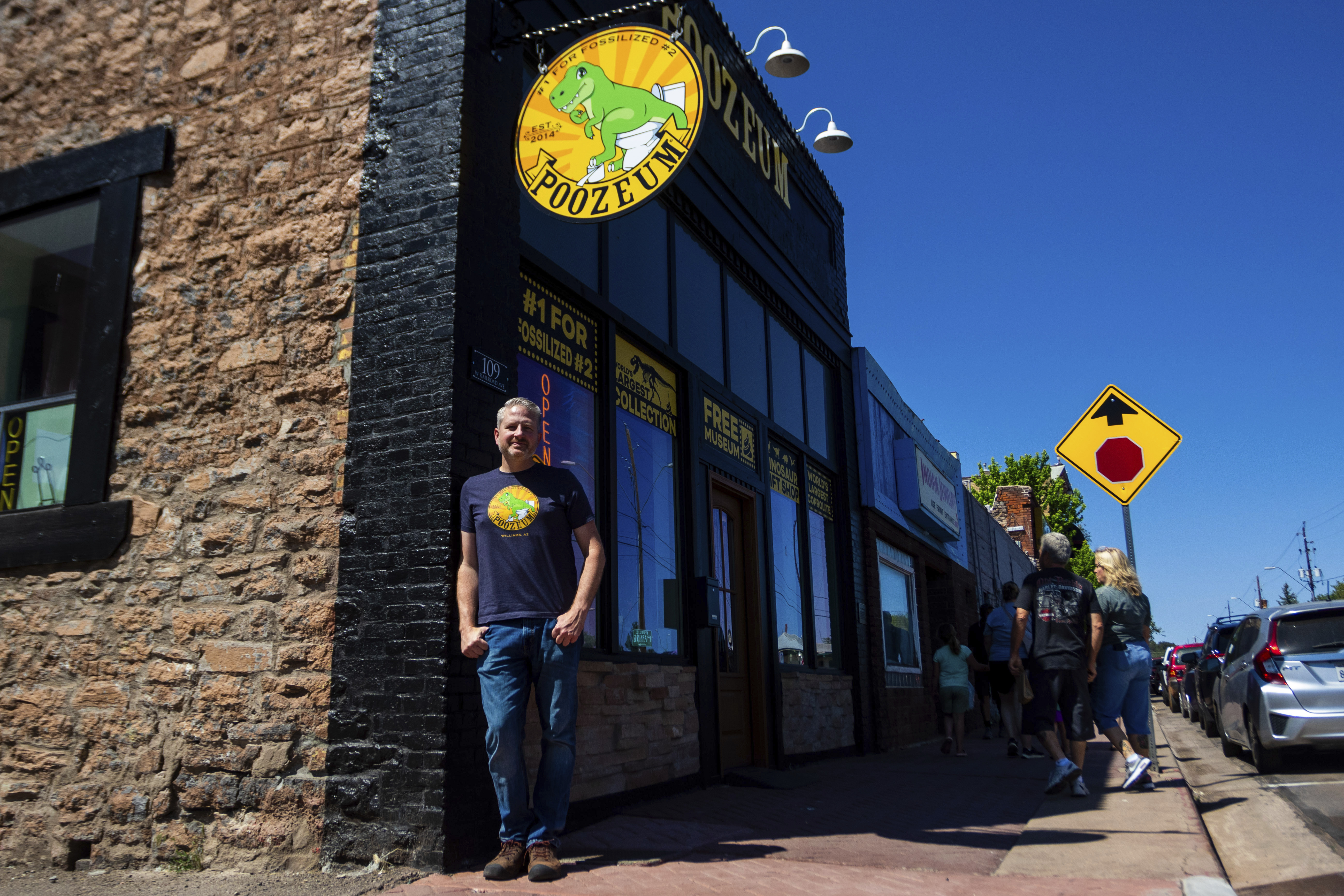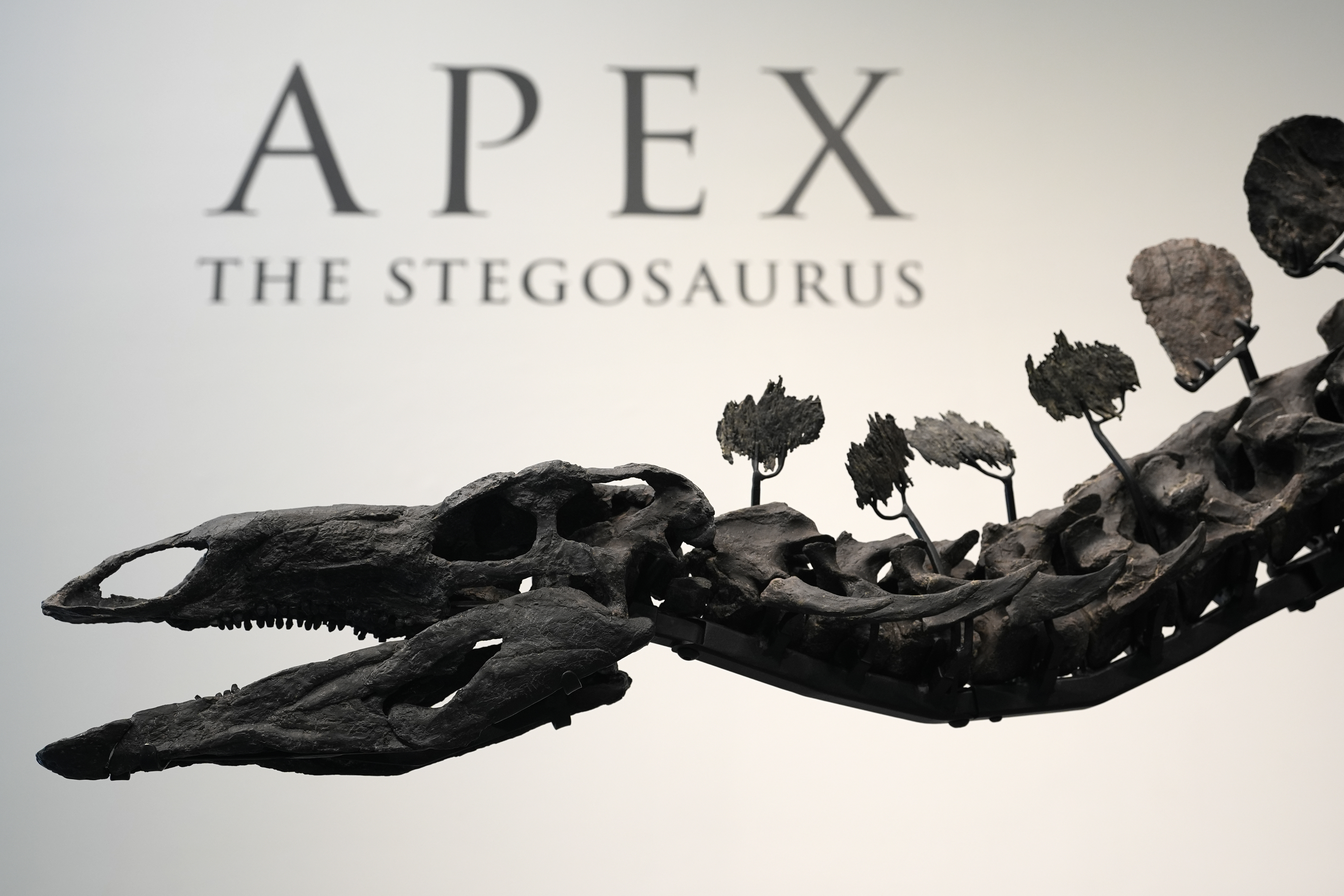On anniversary of Frida Kahlo’s death, her art’s spirituality keeps fans engaged around the globe

An art handler adjusts Frida Kahlo’s “Diego and I” on display at Sotheby’s auction house during a press preview for the Modern Evening auction,in New York. The 70th anniversary of Kahlo’s death is on July 13, 2024.
(AP Photo/Mary Altaffer, File)
BY MARÍA TERESA HERNÁNDEZ July 13, 2024MEXICO CITY (AP) — Frida Kahlo had no religious affiliation. Why, then, did the Mexican artist depict several religious symbols in the paintings she produced until her death on July 13, 1954?“Frida conveyed the power of each individual,” said art researcher and curator Ximena Jordán. “Her self-portraits are a reminder of the ways in which we can exercise the power that life — or God, so to speak — has given us.”Born in 1907 in Mexico City — where her “Blue House” remains open for visitors — Kahlo used her own personal experiences as a source of inspiration for her art.The bus accident that she survived in 1925, the physical pain that she endured as a consequence and the tormented relationship with her husband — Mexican muralist Diego Rivera — all nurtured her creativity.Her take on life and spirituality sparked a connection between her paintings and her viewers, many of whom remain passionate admirers of her work on the 70th anniversary of her death.One of the keys to understand how she achieved this, Jordán said, lies in her self-portraits.Kahlo appears in many of her paintings, but she did not portray herself in a naturalistic way. Instead, Jordán said, she “re-created” herself through symbols that convey the profoundness of interior human life.RELATED STORIES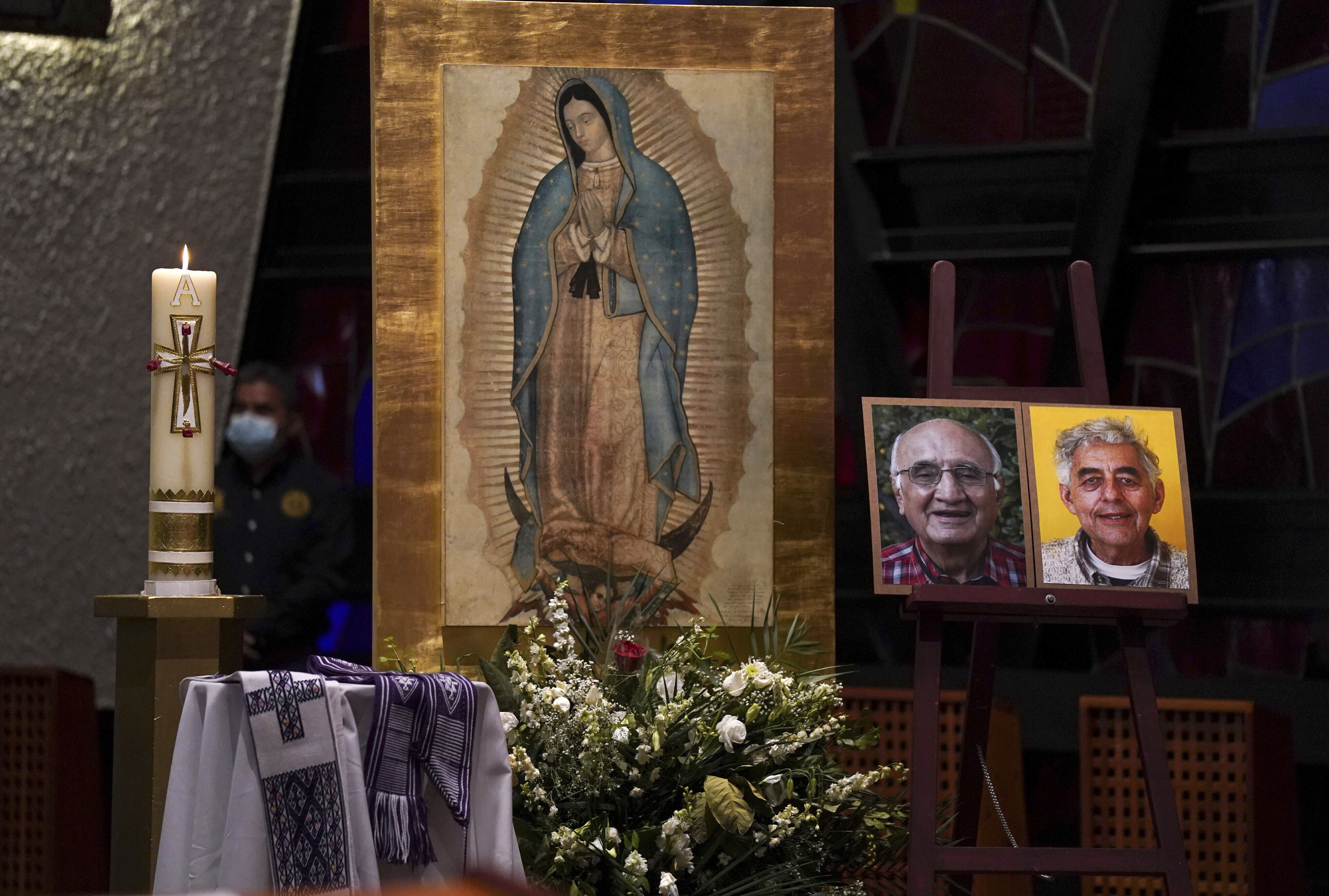 Peace must be a priority, say Catholic leaders on anniversary of priests' violent deaths in Mexico
Peace must be a priority, say Catholic leaders on anniversary of priests' violent deaths in Mexico In secular France, chaplains prepare to provide Olympians with spiritual support during the Games
In secular France, chaplains prepare to provide Olympians with spiritual support during the Games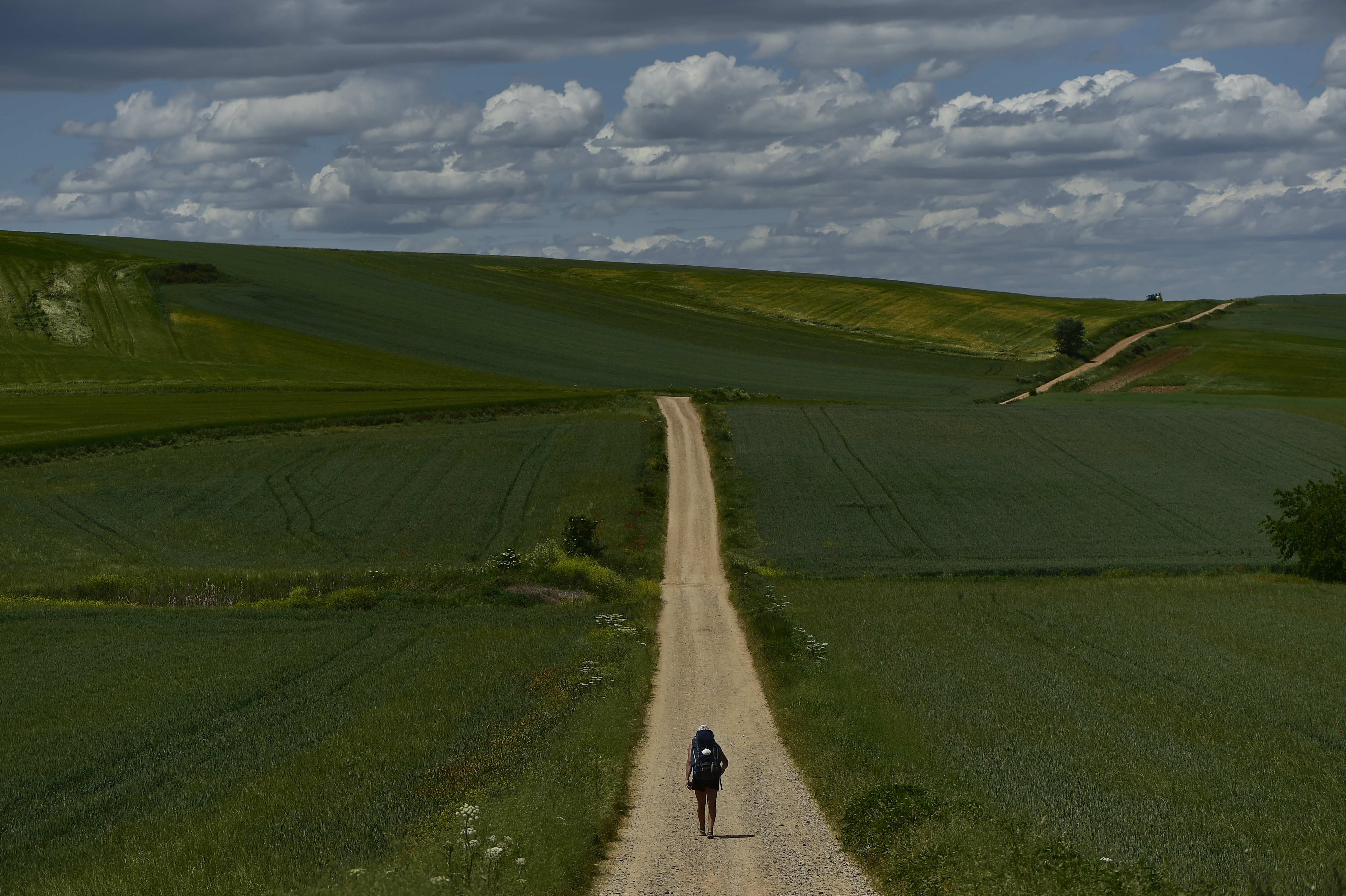 The Camino, a Catholic pilgrimage, increasingly draws the spiritual but not religious“Diego and I” is the perfect example. Painted by Kahlo in 1949, it sold for $34.9 million at Sotheby’s in New York in 2021, an auction record for a work by a Latin American artist.
The Camino, a Catholic pilgrimage, increasingly draws the spiritual but not religious“Diego and I” is the perfect example. Painted by Kahlo in 1949, it sold for $34.9 million at Sotheby’s in New York in 2021, an auction record for a work by a Latin American artist.
In the painting, Kahlo’s expression is serene despite the tears falling from her eyes. Rivera’s face is on her forehead. And, in the center of his head, a third eye, which signifies the unconscious mind in Hinduism and enlightenment in Buddhism.
According to some interpretations, the painting represents the pain that Rivera inflicted on her. Jordán, though, offers another reading.
“The religiosity of the painting is not in the fact that Frida carries Diego in her thoughts,” Jordán said. “The fact that she bears him as a third eye, and Diego has a third eye of his own, reflects that his affection for her made her transcend to another dimension of existence.”
In other words, Kahlo portrayed how individuals connect to their spirituality through love.
“I connected with her heart and writings,” said Cris Melo, a 58-year-old American artist whose favorite Kahlo work is the aforementioned painting. “We had the same love language, and similar history of heartache.”
Melo, unlike Kahlo, did not go through a bus accident that punctured her pelvis and led to a life of surgeries, abortions and a leg amputation.
Still, Melo said, she experienced years of physical pain. And in the midst of that suffering, while fearing that resilience might slip away, she said to herself: “If Frida could handle this, so can I.”
Even if most of her artwork depicts her emotional and physical suffering, Kahlo’s paintings do not provoke sadness or helplessness. On the contrary, she is seen as a woman — not only an artist — strong enough to deal with a broken body that never weakened her spirit.
“Frida inspires many people to be consistent,” said Amni, a London-based Spanish artist who asked to be identified only by his artistic name and reinterprets Kahlo’s works with artificial intelligence.
“Other artists have inspired me, but Frida has been the most special because of everything she endured,” Amni said. “Despite her suffering, the heartbreak, the accident, she was always firm.”
For him, as for Melo, Kahlo’s most memorable works are those in which Rivera appears on her forehead, like a third eye.
According to Jordán, Kahlo touched a chord that most artists of her time did not. Influenced by revolutionary nationalism, muralists like Rivera or David Alfaro Siqueiros kept a distance from their viewers though intellectual works that mainly focused on their social, historic and political views.
Kahlo, on the other hand, was not shy in portraying her physical disabilities, her bisexuality and the diversity of beliefs that weigh on the human spirit.
In “The Wounded Deer,” for example, she is transformed into an animal whose body bleeds after being shot by arrows. And just like a martyr in Catholic imagery, Kahlo’s expression remains composed.
Aligned with a Marxist ideology, Kahlo thought that the Catholic Church was emasculating, meddlesome and racist. But in spite of her disdain toward the institution, she understood that devotion leads to a beneficial spiritual path.
A decade after her accident, probably overwhelmed by the fact that she survived, Kahlo started collecting votive offerings — tiny paintings that Catholics offer as gratitude for miracles. In her Blue House, the 473 votive offerings are still preserved.
Kahlo might have regarded her survival as a miracle, Jordán said. “The only difference is that she, due to her context, did not attribute that miracle to a deity of Catholic origin, but to the generosity of life.”
Perhaps that’s why, in her final days, she decided to paint a series of vibrant, colorful watermelons that would be her last work.
In that canvas, over a split watermelon lying underneath a clouded sky, she wrote: “Vida la vida,” or “Long live life.”

The house where Frida Kahlo once lived, called the Diego Rivera and Frida Kahlo House and Studio Museum, is linked with a walkway bridge to a white and pink house-studio once occupied by her husband Diego Rivera, in Mexico City, Oct. 31, 2017. The 70th anniversary of Kahlo’s death is on July 13, 2024. (AP Photo/Anita Snow, File)

Frida Kahlo, Mexican painter and surrealist, poses at her home in Mexico City, April 14, 1939. The 70th anniversary of Kahlo’s death is on July 13, 2024. (AP Photo, File)

A visitor stylized as Frida Kahlo takes a selfie with Frida’s Kahlo self-portrait at the Frida Kahlo retrospective exhibition at the Faberge Museum in St. Petersburg, the first Frida Kahlo exposition of such scale in Russia, Feb. 2, 2016. The 70th anniversary of Kahlo’s death is on July 13, 2024. (AP Photo/Dmitry Lovetsky, File)

Autumn Williams and Mateo Londono view a 1938 photo by Nickolas Muray titled “Frida and Diego with Gas Mask” at the Frida Kahlo and Diego Rivera art show hosted by the NSU Art Museum in Fort Lauderdale, Florida, March 10, 2015. The 70th anniversary of Kahlo’s death is on July 13, 2024. (AP Photo/J Pat Carter, File)

Dione Lugones shows off her tattoo in the likeness of Mexican artist Frida Kahlo, at La Marca, or The Brand tattoo parlor in Havana, Cuba, Feb. 3, 2016. The 70th anniversary of Kahlo’s death is on July 13, 2024. (AP Photo/Desmond Boylan, File)

- Children color in a giant poster of Mexican artist Frida Kahlo, during a ceremony marking the 5th anniversary of the Tate Modern gallery in Southwark, London, May 12, 2005. The 70th anniversary of Kahlo’s death is on July 13, 2024. (AP Photo/Lefteris Pitarakis, File)

Play director and actress Carla Liguori performs the role of the Mexican painter Frida Kahlo in the musical “Frida, entre lo absurdo y lo fugaz” or “Frida, between the Absurd and Fleeting” in Buenos Aires, Argentina, July 15, 2013. The 70th anniversary of Kahlo’s death is on July 13, 2024. (AP Photo/Natacha Pisarenko, File)

A mural of Mexican painter Frida Kahlo, painted by Los Angeles muralist Levi Ponce, decorates the Pacoima section of Los Angeles, known as Mural Mile, June 6, 2015. The 70th anniversary of Kahlo’s death is on July 13, 2024. (AP Photo/Richard Vogel, File)

An artist makes screen prints in the background of Frida Kahlo’s face printed on the art installation from artists, Rirkrit Tiravanija and Tomas Vu, at the Untitled Art gallery during Art Basel, Dec. 6, 2018, in Miami Beach, Florida. The 70th anniversary of Kahlo’s death is on July 13, 2024. (AP Photo/Brynn Anderson, File)
____
Associated Press religion coverage receives support through the AP’s collaboration with The Conversation US, with funding from Lilly Endowment Inc. The AP is solely responsible for this content.

MARÍA TERESA HERNÁNDEZ
Hernández is a reporter on the AP’s Global Religion team. She is based in Mexico City and covers Latin America.

